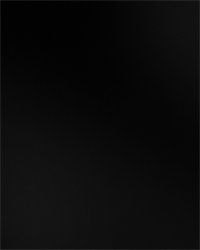interview • alyssa gorelick
i heart photograph: in this image, “in a flash,” there's a tension between the document of the event and the materiality of adding to and re-photographing it. are the shine of the flash and the cut-photo flower meant to interrupt the original image, or do they serve another purpose?
alyssa gorelick: interrupting the original image is one effect of my additions of the flower and the flash. i was also thinking about the creative process being a series of tests. the image i used is of a nuclear test from 1953. the flash of my camera captured on the photo paper along with the handmade photo flower become records of my test. both experiments end in a flash. seeing catastrophic experiments combined with those that are small and gestural interest me, one hiding inside the other.
i.h.p.: along those lines, the flower, which appears to be made out of another copy of the mushroom cloud itself, provides another set of tensions: the nuclear blast as a WWII icon of total war, and the flower as an icon of '60s countercultural peace movements. what was behind your decision to make a flower as the handmade gesture to insert into the frame of the final photo?
a.g.: by making the flower by hand i am presenting my transparent attempt at mimicking a natural form, specifically a long-standing symbol of beauty and peace. the mushroom cloud image, which embodies “total war,” becomes a backdrop for the handmade gesture. by using a duplicate photograph of the nuclear test as material to construct a flower, camouflage is provided for my creation. the optical flattening that results from re-photographing the flower resting on the nuclear blast image heightens the camouflaging effect.
i.h.p.: could you talk a little more about the relationship between camouflage and materiality in the photo? it seems that making it apparent that the photo is a "photo of a photo" heightens a viewer's desire to look for metaphor, metonymy and "content" in the work rather than suppressing it. and as you mentioned earlier, the flash of the explosion doubles the flash of your camera. how does this kind of linguistic doubling play a role in your practice in general?
a.g.: we have a direct relationship with flowers, we have all seen touched and smelled them. nuclear explosions are intangible and most of us have only seen them in representations. to make a flower out of paper is to reiterate its tactility. to make a flower out of a photograph that contains an image of a nuclear blast points to the tension between the tactile and the ephemeral that a photographic representation is capable of revealing. using a nuclear blast photo as a background or environment which serves to disguise a constructed flower generated out of the same essential skin—the photo paper—implements a form of visual deception that is very much tied to war and survival: camouflage. the trick of camouflage is one that has evolved in nature as defensive function and is based on the optical blending of disparate materials. the flash in this piece functions as a linguistic and formal double as well an agent that reveals that no matter what the visual content of a photograph, we are always looking at a material skin, we are looking at paper. you ask how linguistic doubling plays a role in my practice in general, i would say it goes hand in hand with my interest in the co-existence of ephemerality and materiality in photographs.
interview is a weekly column by nicholas grider that appears each tuesday on i heart photograph.





























